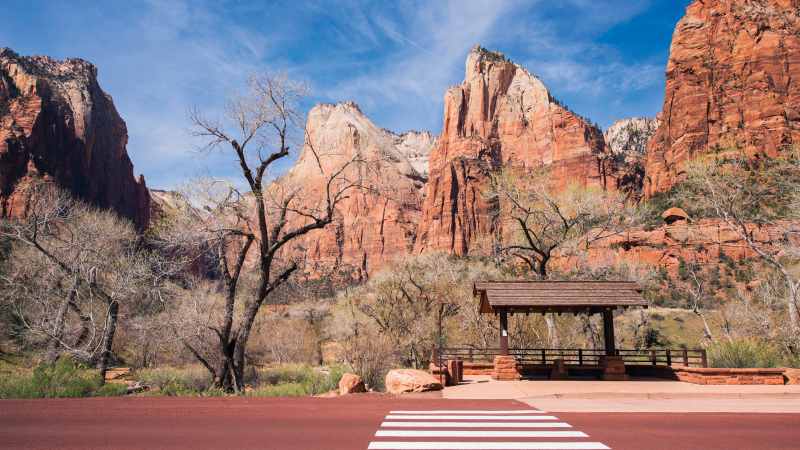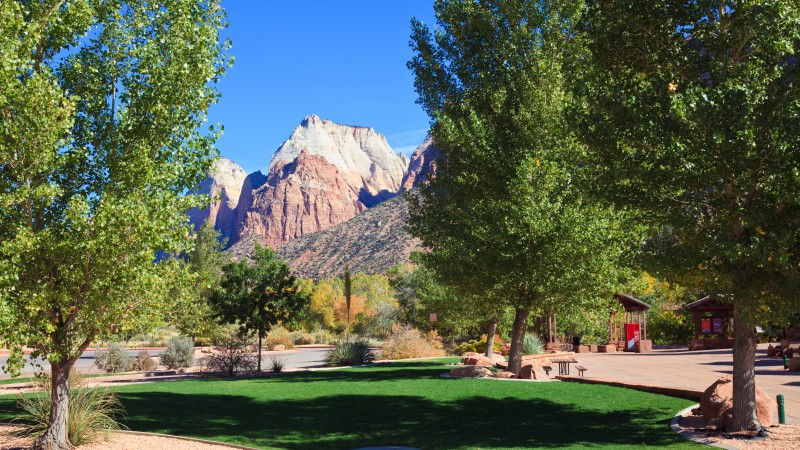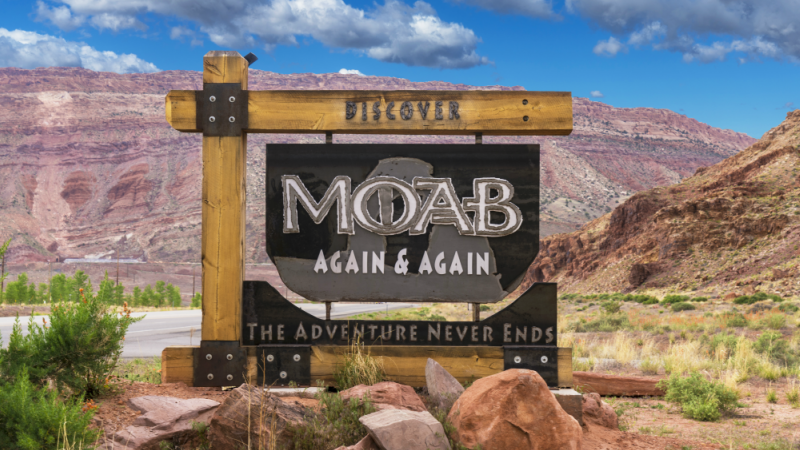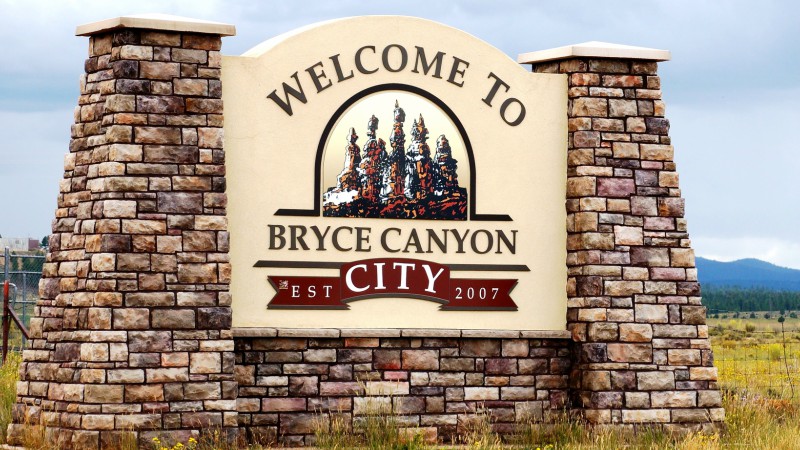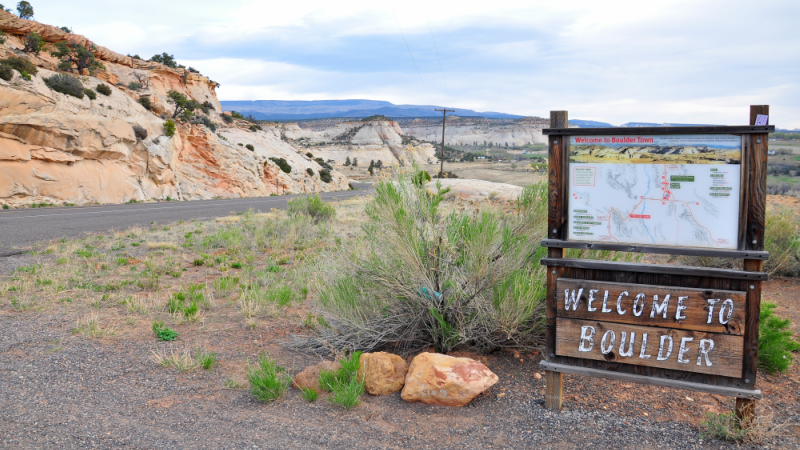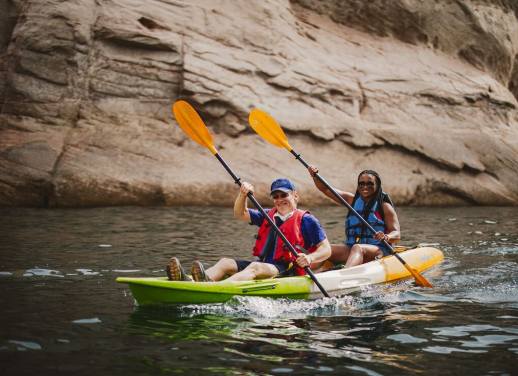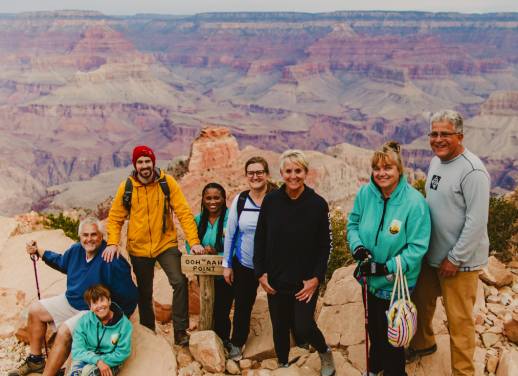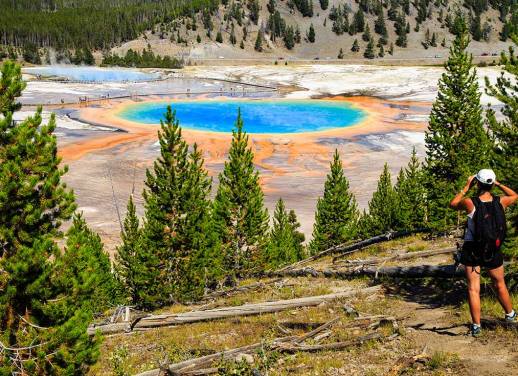We all know how incredible Utah’s national parks are. The soaring arches. The deep slot canyons. The kaleidoscopic sand stones. It’s no secret – the landscapes here are both epic and surreal. But what about the towns that dwell on their fringes?
The truth is, every adventure has to start and end somewhere. But if you know what you’re doing and where to look, you’ll find that these gateway towns do a bang up job of making the journey that much better.
Springdale
Driving into Springdale, it’s impossible not to gawk at the precipitous red and white cliffs of Zion National Park looming in the background. With its striking vertical geography, winding canyons and delicate hanging gardens, it’s easy to see why it’s Utah’s most popular park. So what kind of town could possibly live up to such wonder? Enter Springdale.
Where Zion is bold, Springdale is modest. And with little more than 500 permanent residents, it’s impressive how this charming town thrives in the shadows of the cliffs beyond. Take a walk down Springdale’s main drag and you’ll find an eclectic array of cafes and restaurants. The best bites can be found at Oscar’s Café, The Spotted Dog and Café Soleil.
When it comes to accommodation, you could go all out the Cliffrose Lodge or Desert Pearl Inn, or book into any number of hotels and cute bed and breakfasts around town. If you’re taking a day off from the hiking, drop into Sorella Gallery or check out the photography and pottery collections at David J. West Gallery.
Moab
The spirit of adventure is palpable in Moab. But this isn’t surprising, considering two of Utah’s national parks sit right on its doorstep. While the scenery in Arches and Canyonlands National Parks is downright jaw-dropping, it’s safe to say that Moab isn’t – at least on the surface. It takes a couple of days to discover there’s more to this dusty town than meets the eye.
With more and more lycra-clad adventurers passing through Moab every year, the food scene has risen to the occasion. Featuring a range of cuisines, you can get delicious grub at favourites like Desert Bistro and Sunset Grill, or cheap places like Moab Diner and Milt’s Stop and Eat. And for some of the best micro-brews in Utah, make sure you drop in for a beer (or two) at the Moab Brewery.
Beyond hiking, Moab is a mecca for alternative outdoor activities. You can get your adrenaline fix river rafting, mountain biking, skydiving, and ballooning. And if you’re looking to stay somewhere a little left field, treat yourself to a glamping experience at Moab Under Canvas. From deluxe tipis to safari tents, you’ll get all the conveniences of hotel living, plus VIP access to the starry skies above.
Bryce Canyon City
Nothing really prepares you for the hoodoos of Bryce Canyon National Park. Rows and rows of red, pink and orange-hued humanoid spires, eerie and silent. It’s a haunting and beautiful sight. And at the end of the day, you’ll need a place to relax and contemplate what you’ve just seen.
That place is Bryce Canyon City. As one of the few populated areas in the region, this little town comes alive during the peak periods – a welcome relief for travellers hoping to get into the swing of small-town America. The good news? You can experience all this at Ruby’s Inn, Bryce Canyon’s main lodgings.
Aside from putting your feet up, Ruby’s offers horseback riding, mountain biking, guided ATV rides and helicopter tours. It also hosts the Bryce Canyon Country Rodeo every summer, The Bryce Canyon Winter Festival (yep, we’re talking sleigh rides), and Old Bryce Town – a collection of throwback shops decorated in the style of an old western street.
For some hearty American food, try out Foster’s Family Steakhouse, Ebenezer’s Barn & Grill, and Bryce Canyon Pines Restaurant. And if you’ve got an extra hour or two, make the short drive to the historic town of Panguitch. Just strolling down the main street feels like you’ve slipped back in time.
Torrey/Boulder
When it comes to Capitol Reef National Park, these two gateways can be lumped in together. Torrey is the closer of the two, a tiny tree-lined town that’s big on charm. After a day’s hiking, you’ll find a collection of hotels and lodges to put your feet up, while Rim Rock Restaurant is the best place to eat, drink and enjoy 360-degree views of Capitol Reef.
Further afield, the serene town of Boulder (above) pops up like an oasis in the vast landscape. It might be small, but the cuisine here is surprisingly good. And the top pick would have to be Hell’s Backbone Grill, which dishes up locally sourced produce from its own organic farm.
If you didn’t drive in via Scenic Byway 12, it’s simple – you have to do it. Connecting Capitol Reef and Bryce Canyon, this dizzying road features some of the most rugged and diverse terrain in the country. Between Boulder and Escalante, look out for the section called the Hogsback, where the land drops off sharply on either side. For a sidestep into Mormon history, you should also take a quick drive out to Fruita Rural Historic District, where you’ll find a scattering of old houses and original settlements.
Want to explore Utah’s amazing national parks? Check out our Utah Parks Circuit tour.
Feature image C/O Shutterstock.

